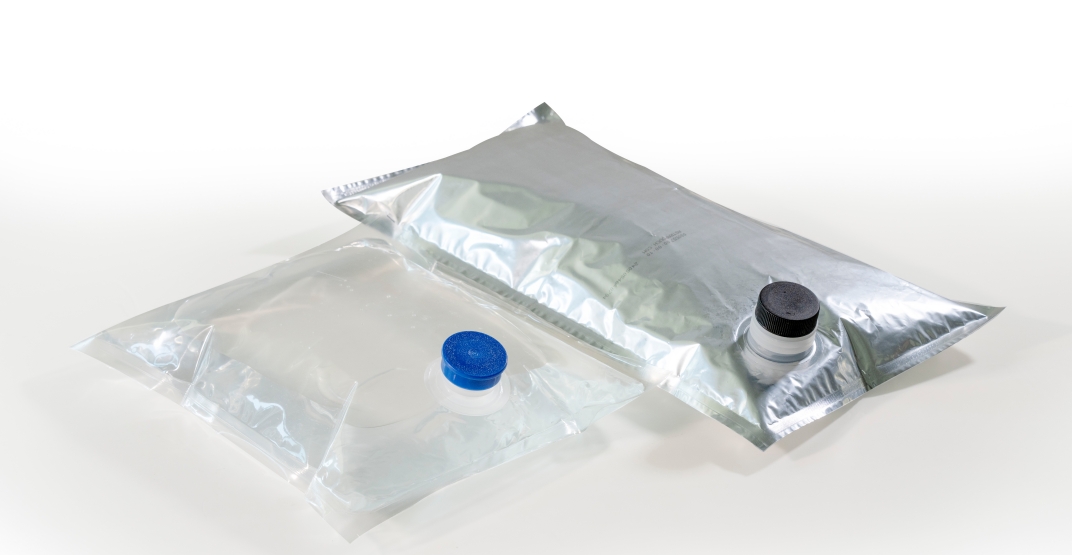Bag-in-Box: An Innovative & Sustainable Solution for Liquid Packaging
1. Overview
Bag-in-Box (BIB) is a modern liquid packaging solution that combines a multi-layer inner pouch with an outer cardboard box. It features a sealed spout, inner pouch, and box, and is widely used in beverages, food, and chemicals. Compared to glass bottles or plastic drums, BIB is lighter, more functional, and more eco-friendly.

2. Structural Features of Bag-in-Box (BIB)
(1) Precision Design of Multi-layer Laminated Materials
The inner layer of the Bag-in-Box typically uses low-density polyethylene (LDPE), while the outer layer incorporates aluminum foil or metallized film to provide UV and oxygen barriers. For example, standard QB/T4635-2014 specifies the physical performance requirements for BOPA/PE laminated film used in BIB, ensuring durability, low-temperature resistance, and other key properties.
(2) Intelligent Dispensing System
With a sealed valve or tap, the Bag-in-Box enables “open-and-use” functionality, allowing liquids to be dispensed as needed without secondary transfer. This special design not only reduces the risk of contamination but also significantly minimizes product waste due to residue.
(3) Modular Adaptability
Bag-in-Box systems offer flexible capacities ranging from 1L to 220L. The outer cartons can be customized in size and support personalized printing, meeting both branding needs and logistical requirements.
3. Key Advantages of Bag-in-Box(BIB)
(1) Eco-friendly & Sustainable
Low-carbon Production: The carbon footprint of corrugated cardboard is 60% lower than that of glass, and its transport weight is reduced by 40%-50%.
Recyclability: Both the carton and the inner bag are separable and recyclable, making them easy to reuse in a circular economy.
Extended Shelf Life: Once opened, the product can stay fresh for 1-2 months (e.g., wine), addressing the issue of rapid spoilage common with traditional packaging after opening.
(2) Enhanced Economic Efficiency
Optimized Transport Costs: The flat design increases storage space utilization by 30%, significantly improving logistics efficiency.
Reduced Overall Costs: For example, a 3L Bag-in-Box reduces packaging costs by 25% compared to glass bottles, with a breakage rate of less than 0.5%.
(3) Enhanced Functionality
Extended Shelf Life: The multi-layer barrier structure helps extend the shelf life of products like juice and edible oil to 12–18 months—significantly longer than the 6–9 months typical of PET bottles.
Improved Safety: The specialized material structure of Bag-in-Box eliminates the breakage risks associated with glass during transport, and the design is also suitable for packaging hazardous chemicals such as paint.
(4) Upgraded User Experience
Convenient Dispensing: The tap design allows for one-handed operation, making it ideal for various scenarios such as homes, restaurants, and more.
Brand Value Enhancement: The outer carton can be customized with high-end visual effects, elevating the brand image and allowing for premium pricing.
4. Applications of Bag-in-Box
(1) Food & Beverage
Alcoholic Beverages: For products like wine and yellow rice wine, Bag-in-Box packaging reduces oxidation and spoilage rates by up to 80%, making it a mainstream choice in the food service industry.
Dairy Products: In B2B markets, fresh milk and yogurt increasingly adopt Bag-in-Box due to its high-barrier freshness preservation and flexible compatibility—supporting both cost reduction and sustainability goals in the dairy industry.
(2) Chemical and Personal Care
Cleaners & Detergents: Concentrated cleaning products packaged in Bag-in-Box with a dosing valve allow for precise mixing and easy refilling, improving efficiency and reducing waste.
Agrochemical: Puncture-resistant materials ensure safe transport of hazardous liquids like pesticides.
Driven by structural innovation and sustainability, Bag-in-Box is redefining the future of liquid packaging worldwide. As breakthroughs in material science accelerate and circular economy policies take hold, this smart, scalable solution is set to replace traditional formats across multiple industries—delivering stronger brand value, operational efficiency, and measurable environmental impact.
